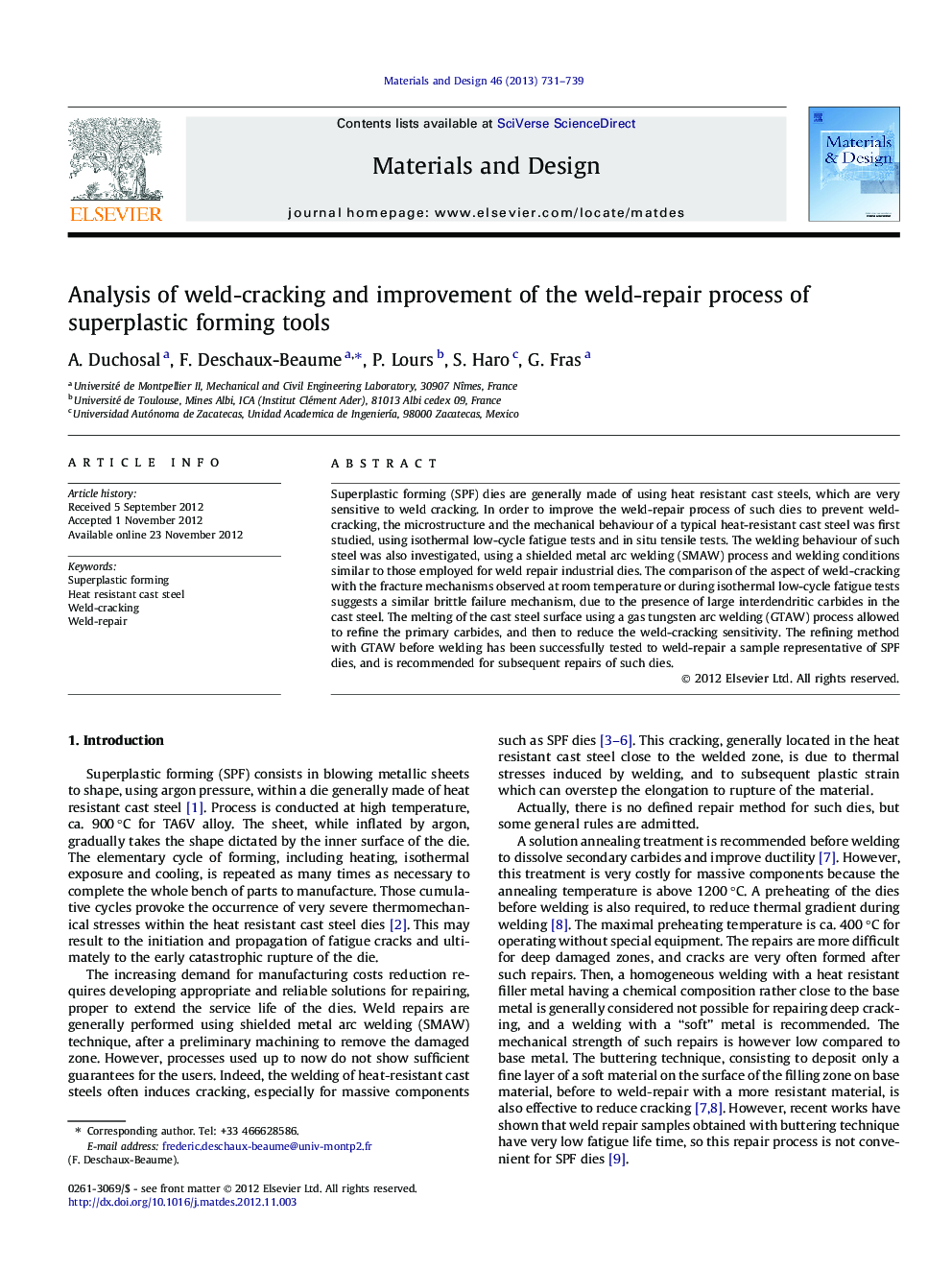| Article ID | Journal | Published Year | Pages | File Type |
|---|---|---|---|---|
| 830203 | Materials & Design (1980-2015) | 2013 | 9 Pages |
Superplastic forming (SPF) dies are generally made of using heat resistant cast steels, which are very sensitive to weld cracking. In order to improve the weld-repair process of such dies to prevent weld-cracking, the microstructure and the mechanical behaviour of a typical heat-resistant cast steel was first studied, using isothermal low-cycle fatigue tests and in situ tensile tests. The welding behaviour of such steel was also investigated, using a shielded metal arc welding (SMAW) process and welding conditions similar to those employed for weld repair industrial dies. The comparison of the aspect of weld-cracking with the fracture mechanisms observed at room temperature or during isothermal low-cycle fatigue tests suggests a similar brittle failure mechanism, due to the presence of large interdendritic carbides in the cast steel. The melting of the cast steel surface using a gas tungsten arc welding (GTAW) process allowed to refine the primary carbides, and then to reduce the weld-cracking sensitivity. The refining method with GTAW before welding has been successfully tested to weld-repair a sample representative of SPF dies, and is recommended for subsequent repairs of such dies.
► Characterisation of the microstructure of a heat-resistant austenitic cast steel. ► Failure analysis using in situ tensile tests and isothermal fatigue tests. ► Analyses of weld cracking mechanism during shielded metal arc welding process. ► Improvement of weld-repair method by re-melting of the base material surface with GTAW process.
